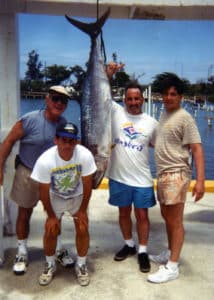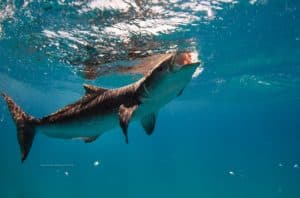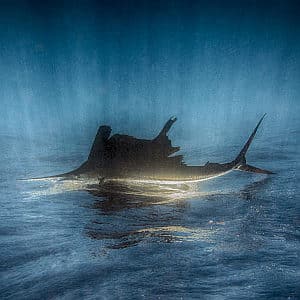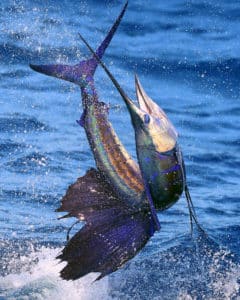What Is Gyotaku?
From the artist’s web site, Maui Fish Printing:
“Gyotaku reflects a part of Japanese history. Gyotaku, or fish printing, is an ancient, time-honored, traditional Japanese art form. Over a century ago, freshly caught fish were painted with a non-toxic ink and covered with a piece of delicate rice paper.
The paper was then carefully smoothed down, and depending on the amount of pressure applied … it creates an exact-size imprint of the fish.
Once the print was completed, the fish could be washed and prepared for a meal. Over the years, gyotaku has grown to be recognized as its own art form.” — Brian Heustis
Yellowfin Tuna
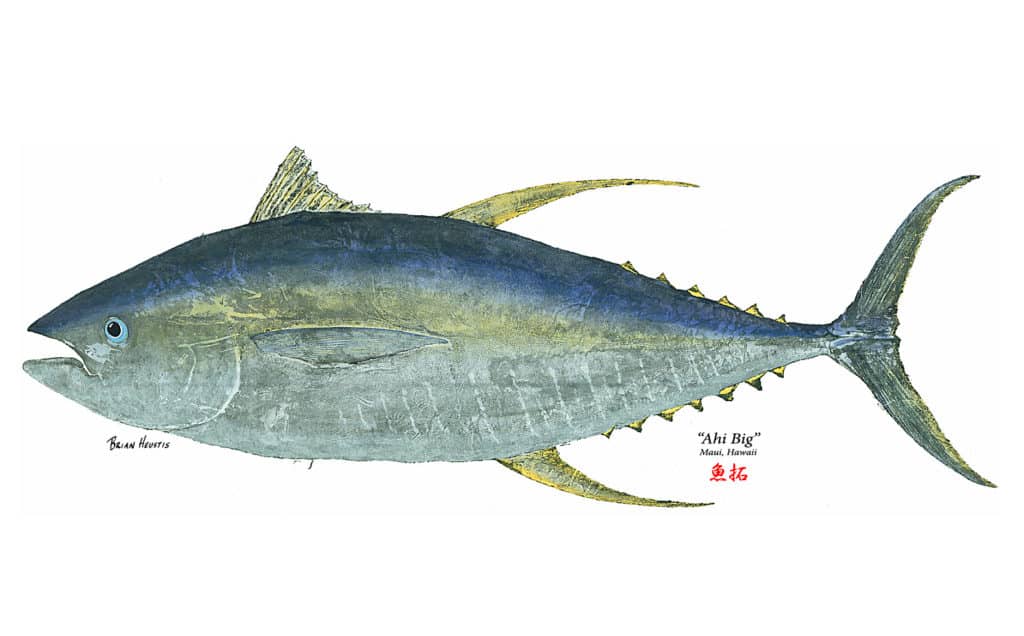
Rusty Jobfish
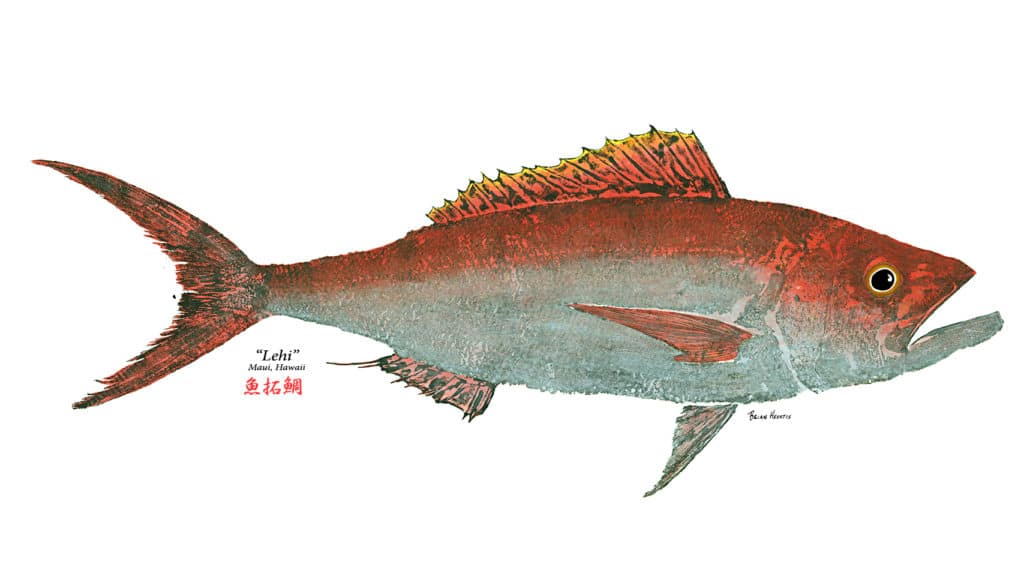
Wahoo
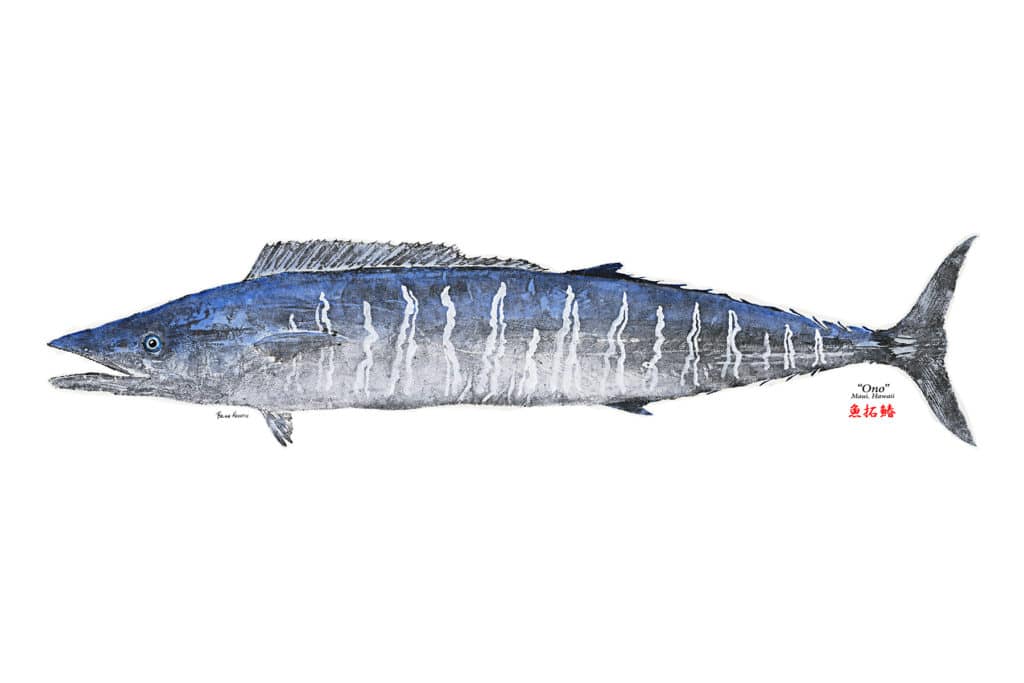
Flyingfish
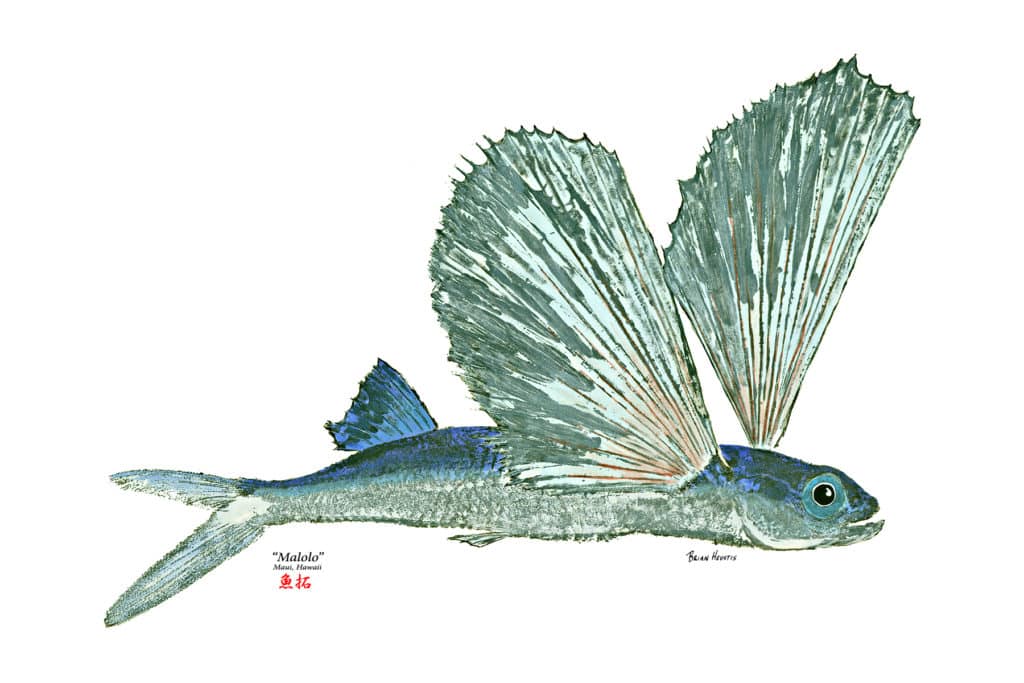
African Pompano
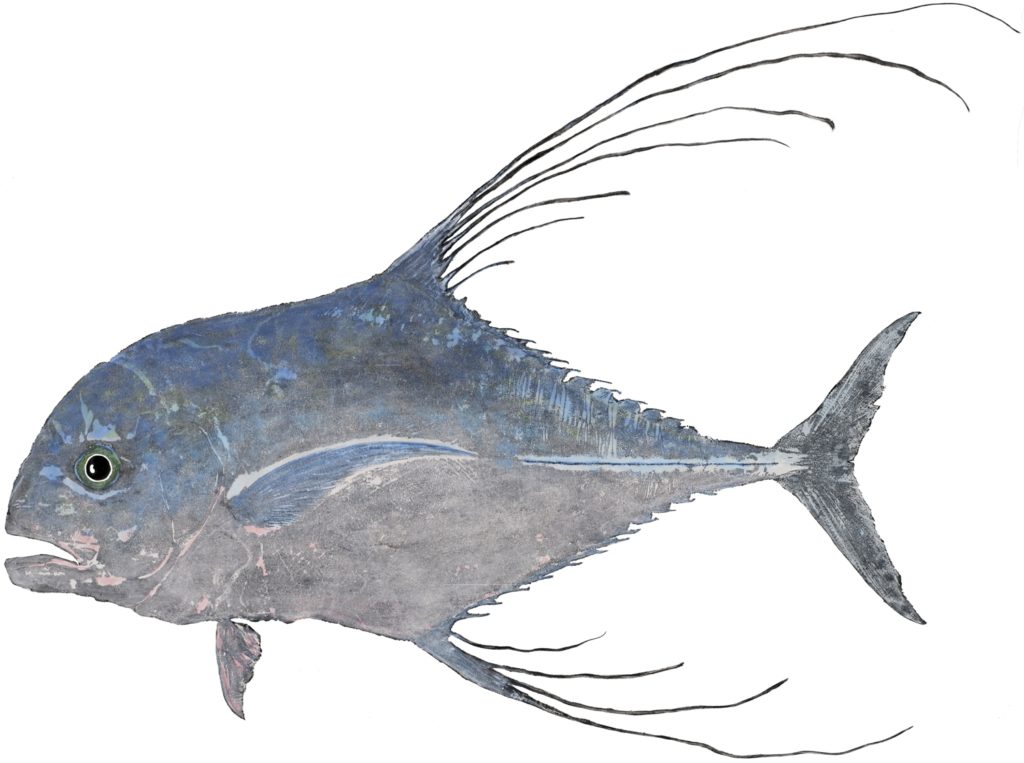
Striped Marlin
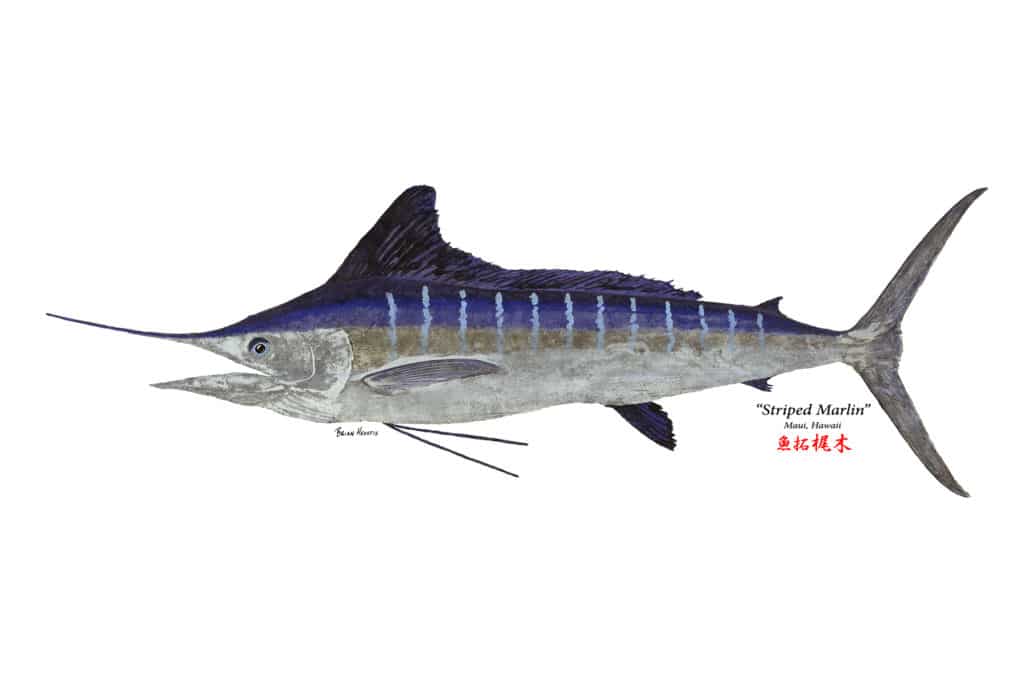
Mahimahi
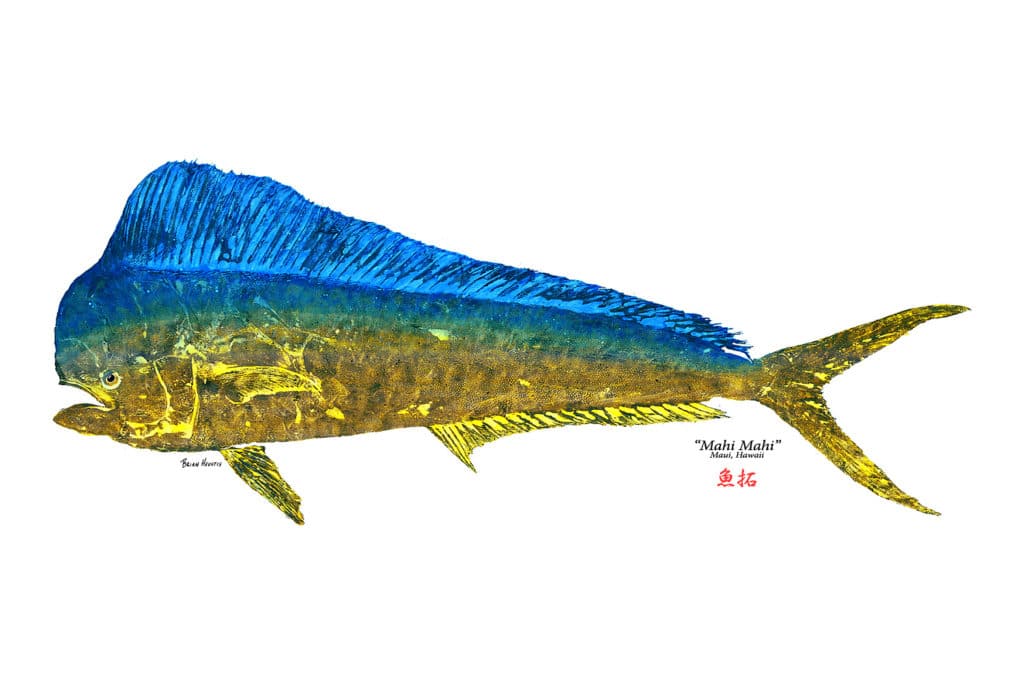
Hogfish
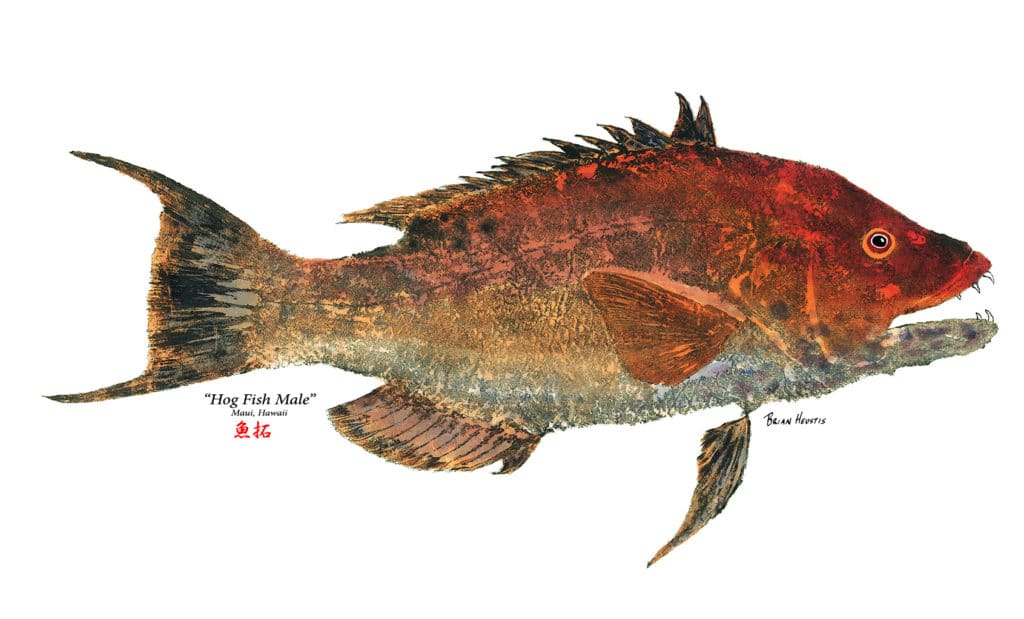
Cornetfish

Green Jobfish
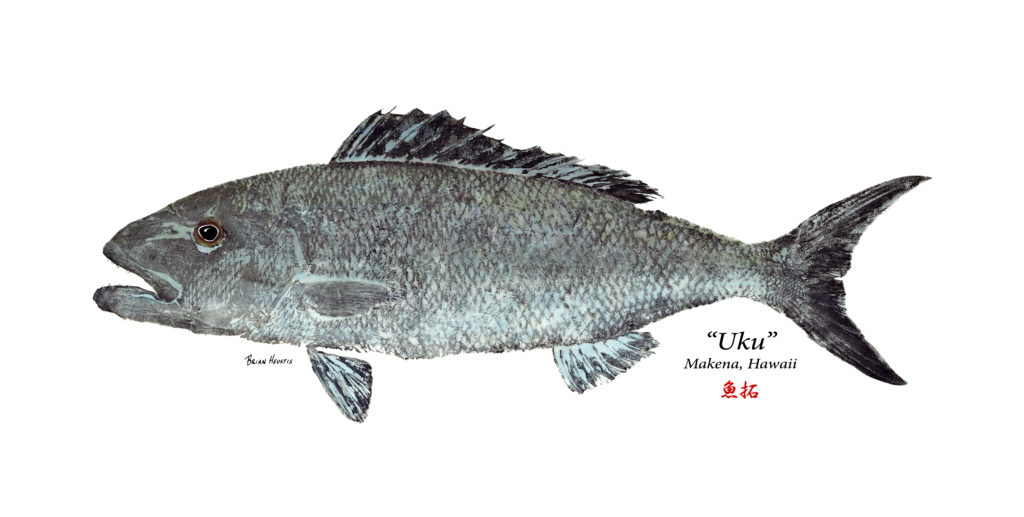
Red drum
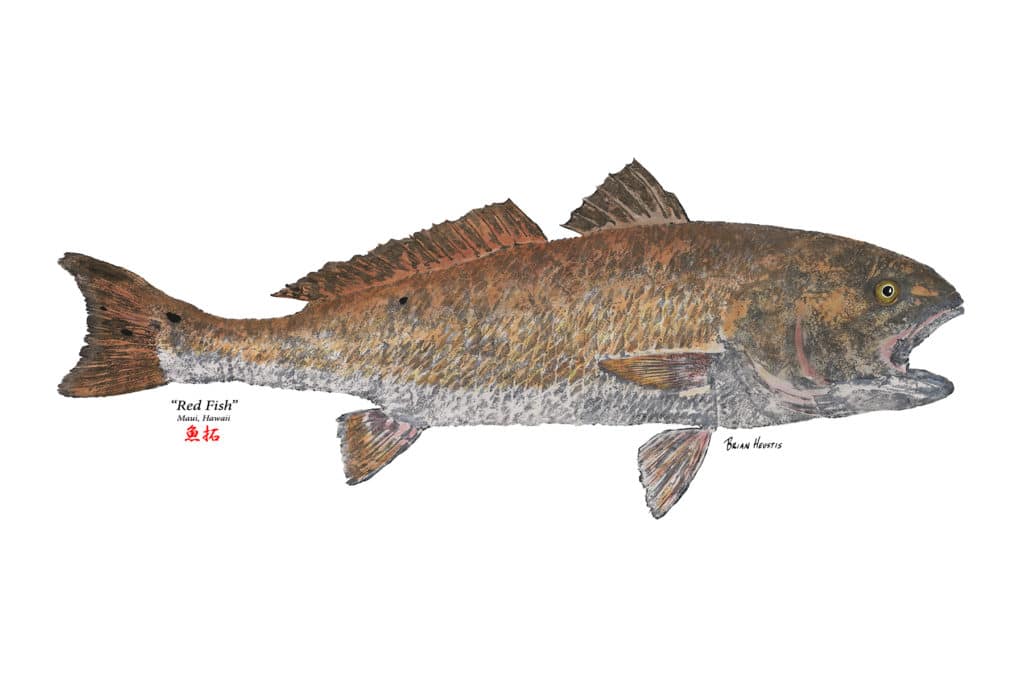
About the Artist
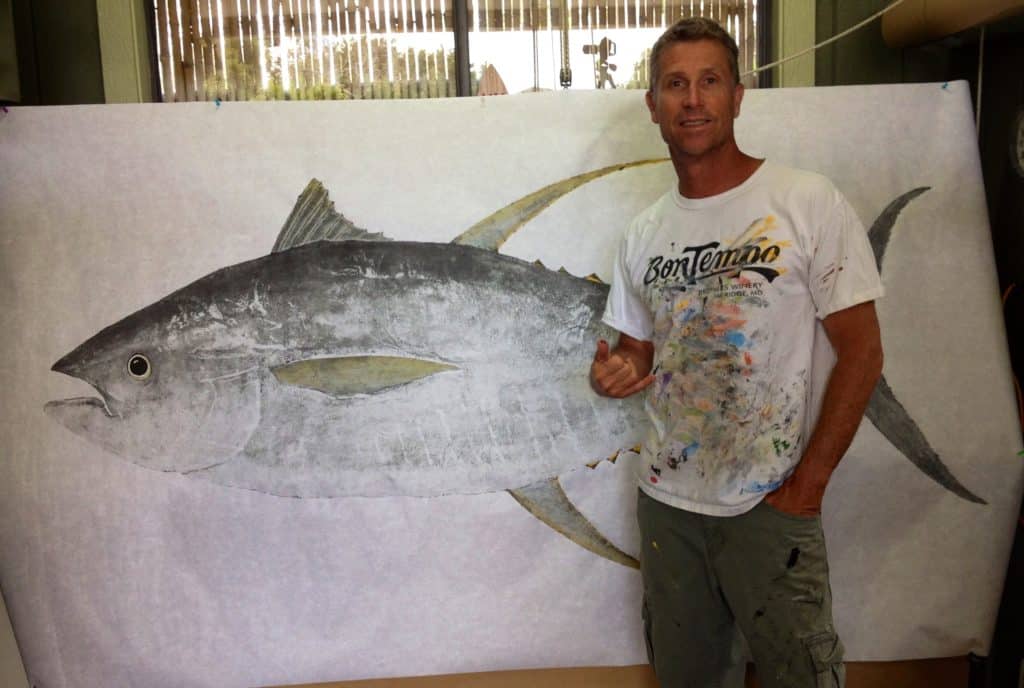
Brian Heustis, owner of Maui Fish Printing, moved to Maui about a decade ago and was there first exposed to gyotaku. “My love and passion for the ocean is the core reason for expressing myself and nature through fish printing,” he says. “Every fish I print is special, no matter how big or small. Each one has a story to tell, and I consider it my honor to be allowed to tell it.”

